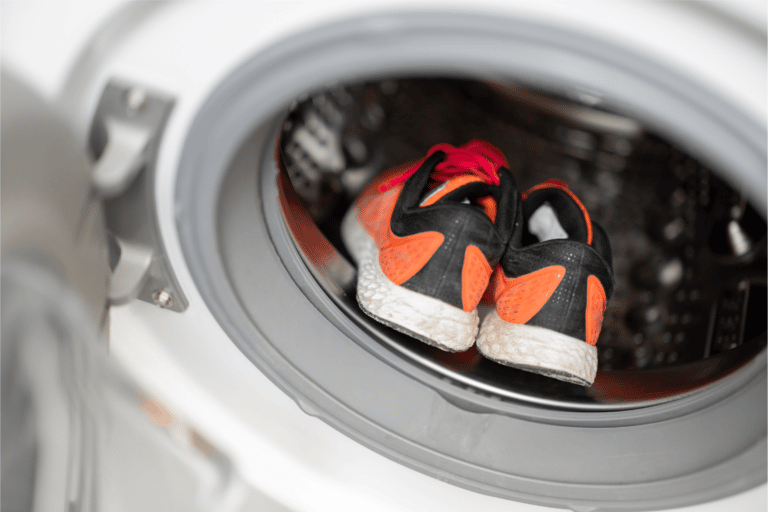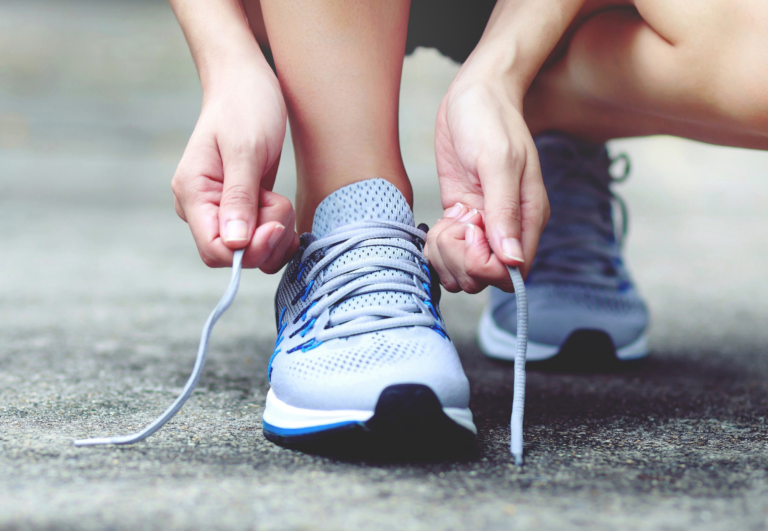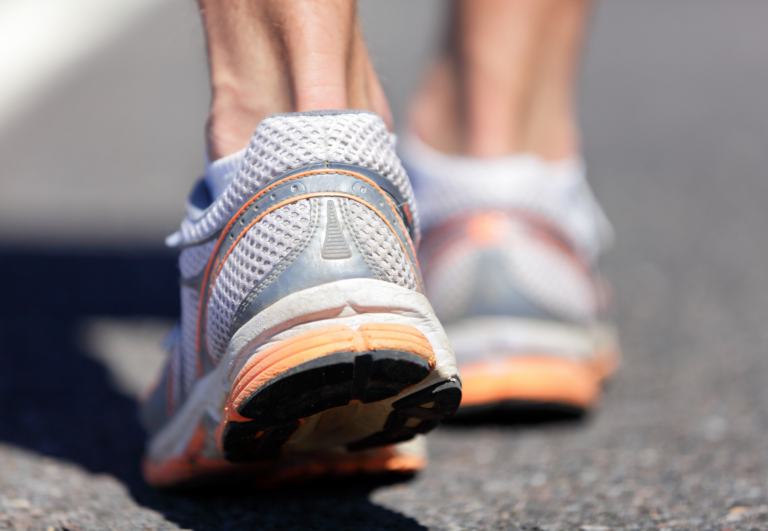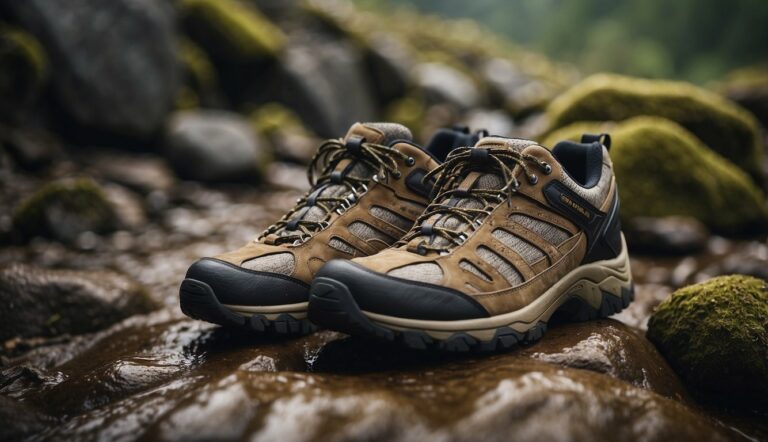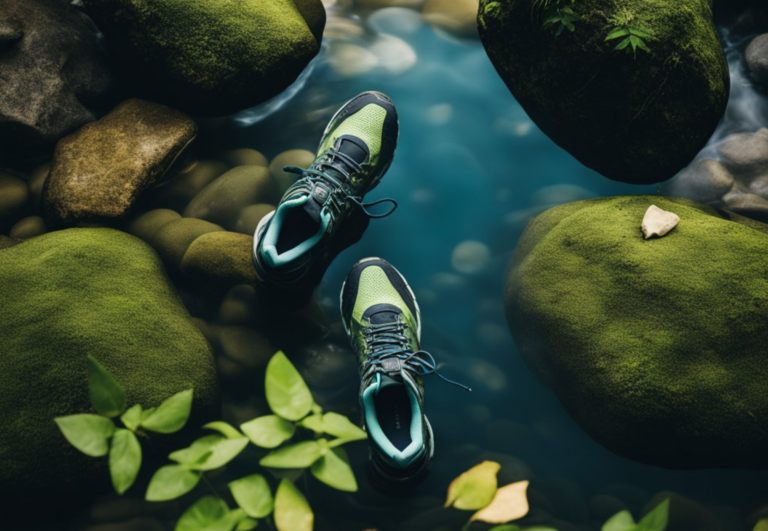How to Choose Running Shoes for High Arches (With Recommendations!)
When selecting running shoes for high arches, it’s important to prioritize cushioning and support to accommodate the unique structure of your feet. High arches can lead to supination, causing your feet to roll outward and impair shock absorption, which may increase the risk of injury.
Look for shoes with a cushioned midsole and ample shock absorption, particularly in the heel and forefoot, to ensure comfort and reduce the impact on your joints. Additionally, consider using custom orthotics or insoles with contoured arch support for a personalized fit. Proper shoe selection can help prevent common issues associated with high arches, such as Achilles tendonitis or back pain, enhancing your overall running experience.
Foot Arch Anatomy and Running Biomechanics – Why Does It Matter?

Your foot arch plays a critical role in your running biomechanics. Think of it as your body’s shock absorber. This function is complemented by the type of material and stack height in the shoe’s midsole. The stack height refers to the amount of material between your foot and the ground, essentially acting as your shoe’s cushion against the impact.
During running, the arch compresses and expands, managing the impact as your foot strikes the ground. This is influenced by several factors, including your pronation style, which is how your foot rolls from heel to toe as you run. This is crucial for shock absorption and stability.
If you have flat feet or collapsed arches, your feet may roll too much inward, a motion known as overpronation. This can lead to a strain in muscles and tendons and may result in discomfort or injury.
High arches can lead to supination, where your feet roll outward, impairing shock absorption and increasing the risk of injury. In such cases, the midsole and outsole of the shoe should offer additional support and cushion.
| Foot Type | Common Issue | Potential Risk |
|---|---|---|
| Flat Feet | Overpronation | Muscle / Tendon Strain |
| High Arches | Supination | Poor Shock Absorption |
Your gait, or the way you walk and run, is affected by your arch type. Analyzing your footprint can reveal if you have flat feet or high arches. A flatter footprint usually indicates overpronation, while a fainter footprint suggests supination.
In choosing running shoes, it’s essential to match your arch type to the shoe design. This supports proper alignment and gait, reducing the risk of pain or injury. So next time you’re shoe shopping, consider your arch. It’s not just about the fit—it’s about keeping your steps healthy and efficient.
Identifying Your Foot Arch Type

Finding out your foot arch type is a crucial step before selecting suitable running shoes. Your arch type affects which shoe will provide the best support and comfort while you’re running. Stack height, toe box, and outsole material should be considered alongside.
If you have flat feet or low arches, your feet might roll inwards too much when you run, a motion known as overpronation. Recognizing if you have flat feet is simple—you’ll notice a nearly complete imprint of your foot if you step on sand or a wet surface.
For normal arches, your footprint will have a distinct curve along the inside of your foot with a band a little less than half the width of your foot connecting the heel and toe.
High arches, on the other hand, result in a very pronounced curve in your footprint, with a very narrow band or even a complete disconnect between the heel and toe.
To determine your arch type at home, perform the “wet test”:
- Wet your foot and step onto a brown paper bag or a heavy piece of paper.
- Stand normally and then step away.
- Look at the imprint and compare the shapes:
| Wet Test Result | Arch Type |
|---|---|
| Full Imprint | Flat Feet |
| Half Imprint | Normal Arches |
| Heel and Ball Imprint | High Arches |
Understanding your foot type is fundamental in selecting a running shoe that fits your arch support needs. It ensures you run more effectively and helps prevent potential injuries. The pronation pattern, running style, and the right shoe material significantly contribute to this effectiveness.
The Connection Between Foot Arch Type and Injuries
When you have flat feet or high arches, the risk of specific injuries can increase due to the lack of natural support and stability in your feet.
Flat feet might cause overpronation, which is an inward rolling motion that could lead to knee pain, shin splints, or plantar fasciitis. It’s the opposite with high arches; they often lead to underpronation, which can put extra stress on the ankles and lead to pain in the lower back or Achilles tendonitis.
Running shoes designed for flat feet usually have built-in stability and support to help mitigate these risks. On the other hand, running shoes for high arches prioritize comfort and cushioning with the right stack height to absorb impact.
The right pair of shoes, carefully selected considering your size and the necessary features, can make a significant difference in injury prevention, as shown in this study on foot arch type and ground reaction forces. The flexibility and motion control offered by a well-fitted shoe ensure comfort and support, reducing the risk of injuries, particularly around the knees.
The right pair of shoes can make a significant difference in injury prevention, as shown in this study on foot arch type and ground reaction forces.
Here’s a quick reference to help you understand the connection:
| Arch Type | Common Injuries | Necessary Shoe Features |
|---|---|---|
| Flat Feet | Plantar Fasciitis, Knee Pain | Stability, Arch Support |
| High Arches | Achilles Tendonitis, Back Pain | Cushioning, Shock Absorption |
The right shoe does more than just offering comfort during running. It decreases the chance of injury by compensating for the lack of natural arch support, offering enhanced motion control, and exhibiting excellent traction. The breathability and well-designed lacing of a running shoe add further to its utility.
When considering shoes for high arches, focus on features like cushioning, flexibility, breathability, and arch support that will complement your foot’s natural structure. Your high arches allow for a larger gap under the midfoot, and during running, this can lead to increased pressure on the rearfoot and forefoot.
To manage this, seek out shoes with enhanced shock absorption and excellent traction.
Selecting Running Shoes for High Arches

When considering shoes for high arches, focus on cushioning and arch support that will complement your foot’s natural structure. Your high arches allow for a larger gap under the midfoot, and during running, this can lead to increased pressure on the rearfoot and forefoot. To manage this, seek out shoes with enhanced shock absorption.
Neutral shoes are often recommended for those with high arches. Neutral shoes typically have a softer foam midsole, which works well to provide the necessary cushioning.
| Best Features for High Arches |
|---|
| Cushioned foam midsole |
| Enhanced shock absorption |
| Arch support |
Remember, everyone’s feet are unique, so it’s crucial to try on multiple pairs and brands to find footwear that feels as though it’s been tailored to your feet. Don’t hesitate to walk or even jog a bit in the store to assess their comfort and fit.
Specialty Shoe Options for High-Arched Runners

When you have high arches, finding the right running shoes is crucial for comfort and injury prevention. Your unique foot structure requires a shoe that offers ample cushioning to absorb impact since high arches don’t distribute pressure as evenly as normal arches.
- For high arches, you’ll benefit most from shoes designed with significant cushioning.
- It’s important to look for a model that emphasizes shock absorption in the heel and forefoot.
| Key Features | Why It’s Important |
|---|---|
| Cushioned Midsoles | Provide shock absorption |
| Flexible Uppers | Allow for natural foot movement |
| Soft Insoles | Enhance comfort and support |
We’ve rounded up some of the best options designed to support your arches and keep you running strong.
- Brooks Ghost 15: Revered for its consistent performance, the Brooks Ghost 15 offers a soft and secure fit, with ample cushioning that high-arched runners will appreciate for both short jogs and long hauls.
- ASICS GEL-Nimbus 25: ASICS brings you a shoe that’s all about plush comfort. The GEL-Nimbus 25 is equipped with gel cushioning technology, ensuring a luxurious feel with every stride.
- Lululemon Blissfeel 2: Exclusively designed for women, the Lululemon Blissfeel 2 provides a tailored fit for female runners. It’s a shoe that doesn’t compromise on comfort or style, making it a solid choice for those with high arches.
- Hoka One One Clifton 9: Hoka shoes are well-regarded for their cushioning, and the Clifton 9 continues this tradition with a plush feel and lightweight design, ideal for high-arched runners looking for both comfort and performance.
- New Balance Fresh Foam 1080v11: This model from New Balance features their signature Fresh Foam cushioning, providing a supportive yet soft ride that adapts to high arches for a personalized fit.
- Saucony Triumph 18: Saucony’s Triumph line offers a luxurious underfoot feel with ample cushioning, which can be particularly beneficial for those with high arches in need of extra support during their runs.
- Nike Air Zoom Pegasus: The Pegasus series is known for its responsive cushioning and durability, making it a versatile choice for high-arched runners covering a variety of distances.
| Shoe Model | Best For | Key Features | Typical Price | Interesting Info |
|---|---|---|---|---|
| Brooks Ghost 15 | High-arched runners | Soft and secure fit, ample cushioning | $130 – $150 | A crowd favorite for its balance and smooth transition |
| ASICS GEL-Nimbus 25 | Runners seeking plush comfort | GEL cushioning technology | $150 – $160 | Offers a high level of shock absorption and a soft ride |
| Lululemon Blissfeel 2 | Women with high arches | Tailored fit, stylish design | $140 – $150 | Lululemon’s first entry into performance running shoes |
| Hoka One One Clifton 9 | Comfort and performance seekers | Plush cushioning, lightweight design | $140 – $160 | Known for its meta-rocker design aiding in smooth transitions |
| New Balance Fresh Foam 1080v11 | High-arched runners needing support | Fresh Foam cushioning, adaptive fit | $150 – $160 | Features a data-driven design for precision comfort |
| Saucony Triumph 18 | Runners needing extra cushioning | Luxurious underfoot feel, ample cushioning | $140 – $150 | Comes with Saucony’s FORMFIT system for a custom-like fit |
| Nike Air Zoom Pegasus | Runners valuing responsiveness | Responsive cushioning, durable | $120 – $130 | A versatile shoe that’s been a staple in Nike’s lineup for years |
Remember, the best shoe is one that fits well and feels comfortable throughout your run. It’s not merely about the size, but it also requires attributes like flexibility, lacing, breathability, and traction. These models are just a starting point; always try on a few pairs to see which shoes best support your high arches and running goals.
Custom Orthotics and Insoles for High Arches
When you have high arches, finding the right support is key to comfortable running. Custom orthotics and insoles are designed to contour perfectly to your high-arched feet, providing the necessary support and reducing the risk of injury.
Features to Look for:
- Contoured Arch Support: Ensures the arch of your foot is properly supported with each step.
- Deep Heel Cup: Cradles the heel for stability and shock absorption.
- Cushioning: Offers extra comfort to cope with the added pressure high arches can create.
Where to Find Custom Solutions:
A study comparing different orthotic devices revealed that semi-custom and custom orthotic devices help in distributing weight and alleviating pressure points, which is critical if you have high arches.
How to Obtain Custom Orthotics:
- See a podiatrist for a foot assessment.
- Get a mold or 3D scan of your feet.
- Have the orthotics made to fit the unique shape of your feet.
Using custom orthotics can significantly improve your running experience. They help to ensure your feet maintain the correct position inside your shoes, potentially preventing common issues like plantar fasciitis or tendinitis. While research continues to examine how these solutions affect tendon load during running for flatfooted individuals, the principles can be similar for high arches.
Remember, while there’s an initial investment, the right insoles can make all the difference in your running comfort and performance, helping you to go that extra mile with ease.


